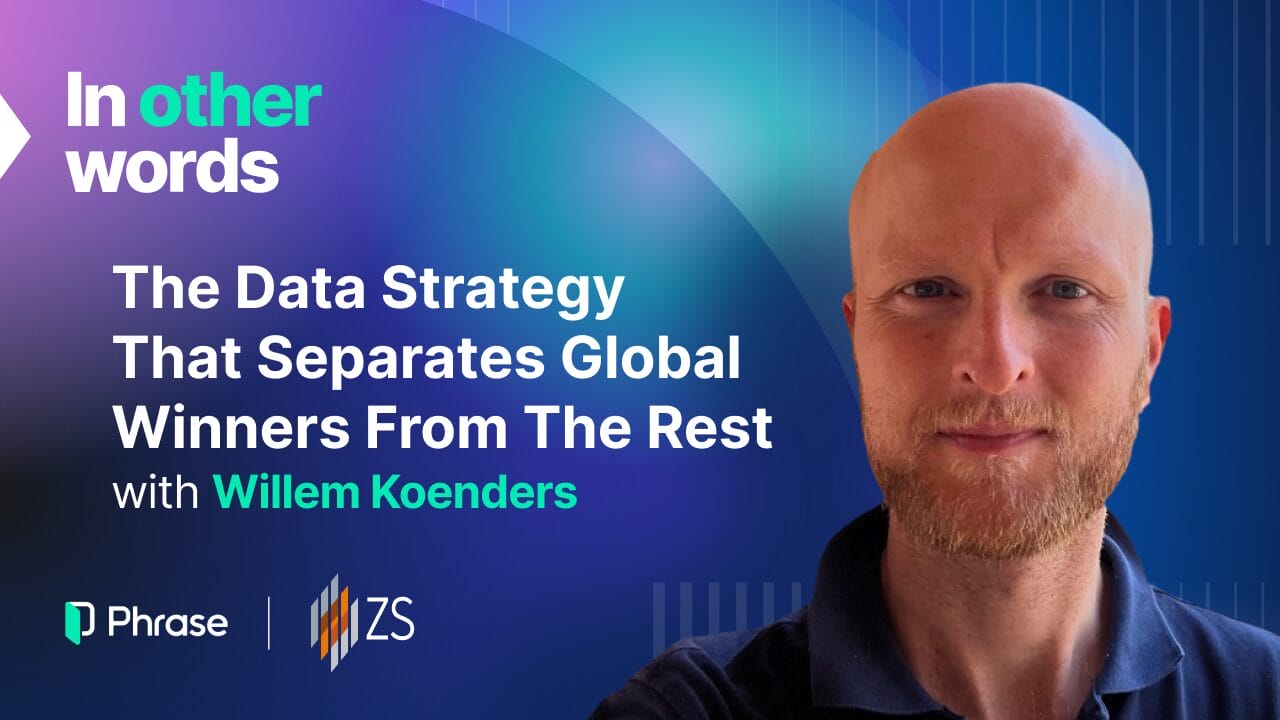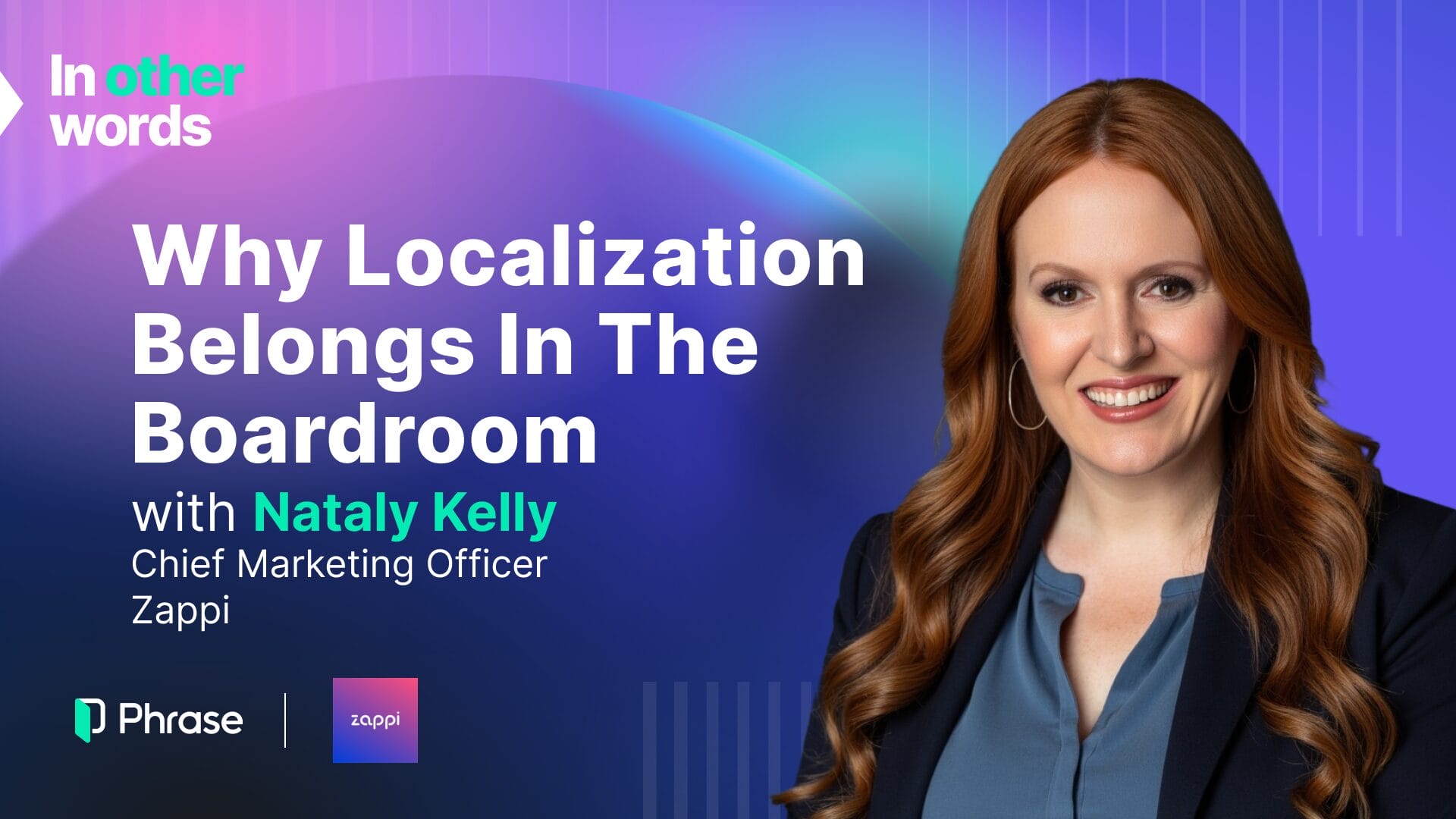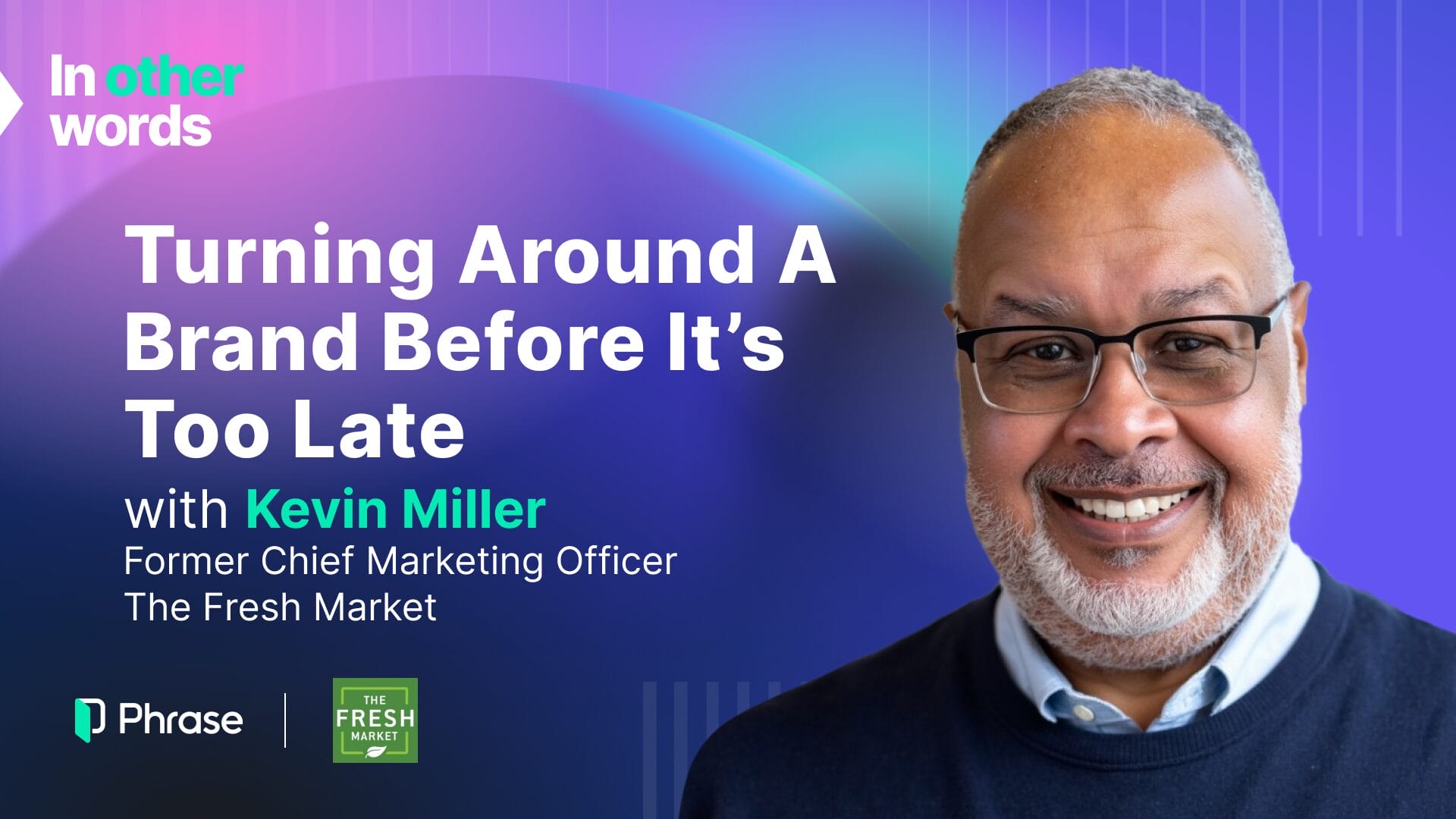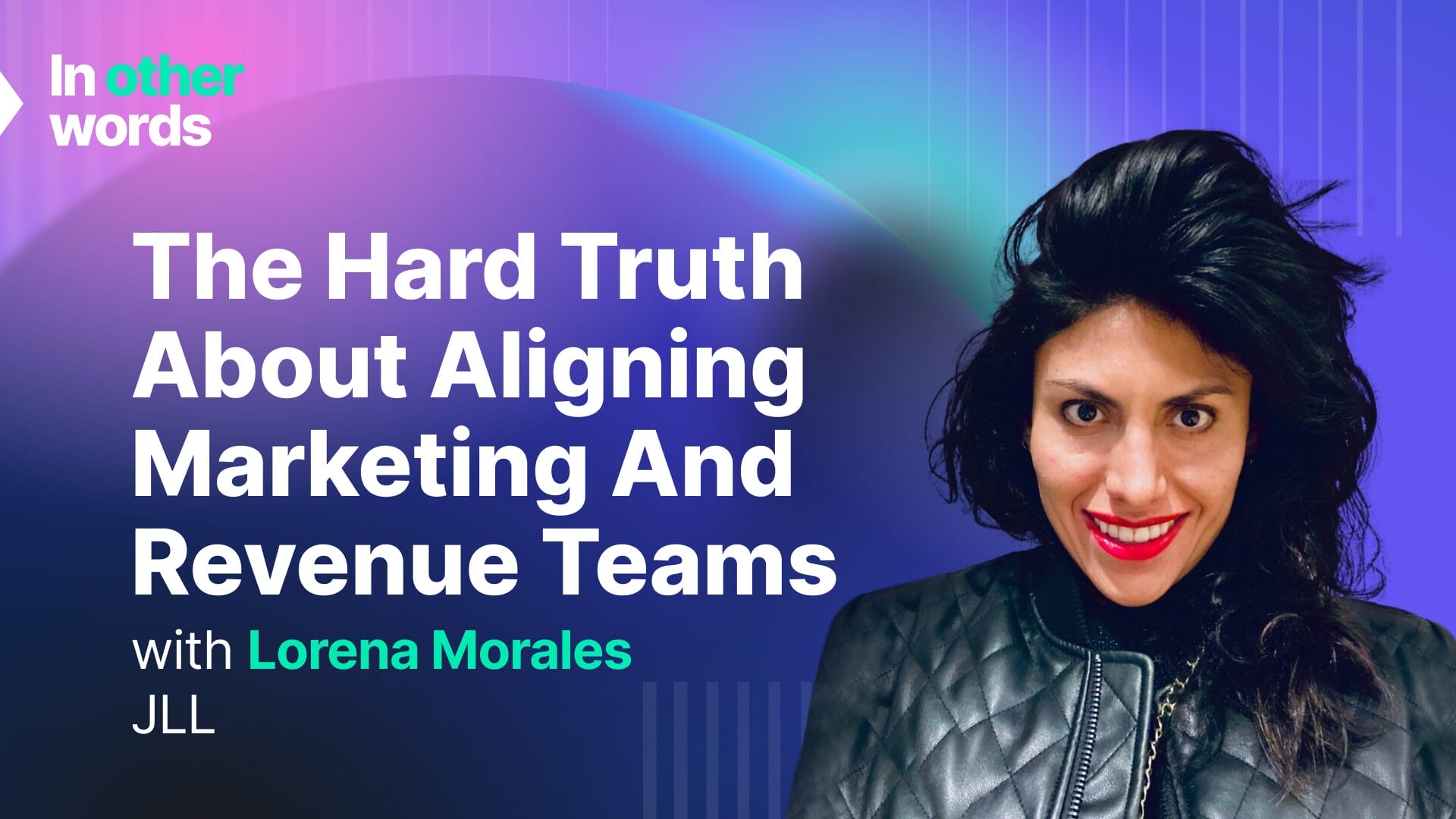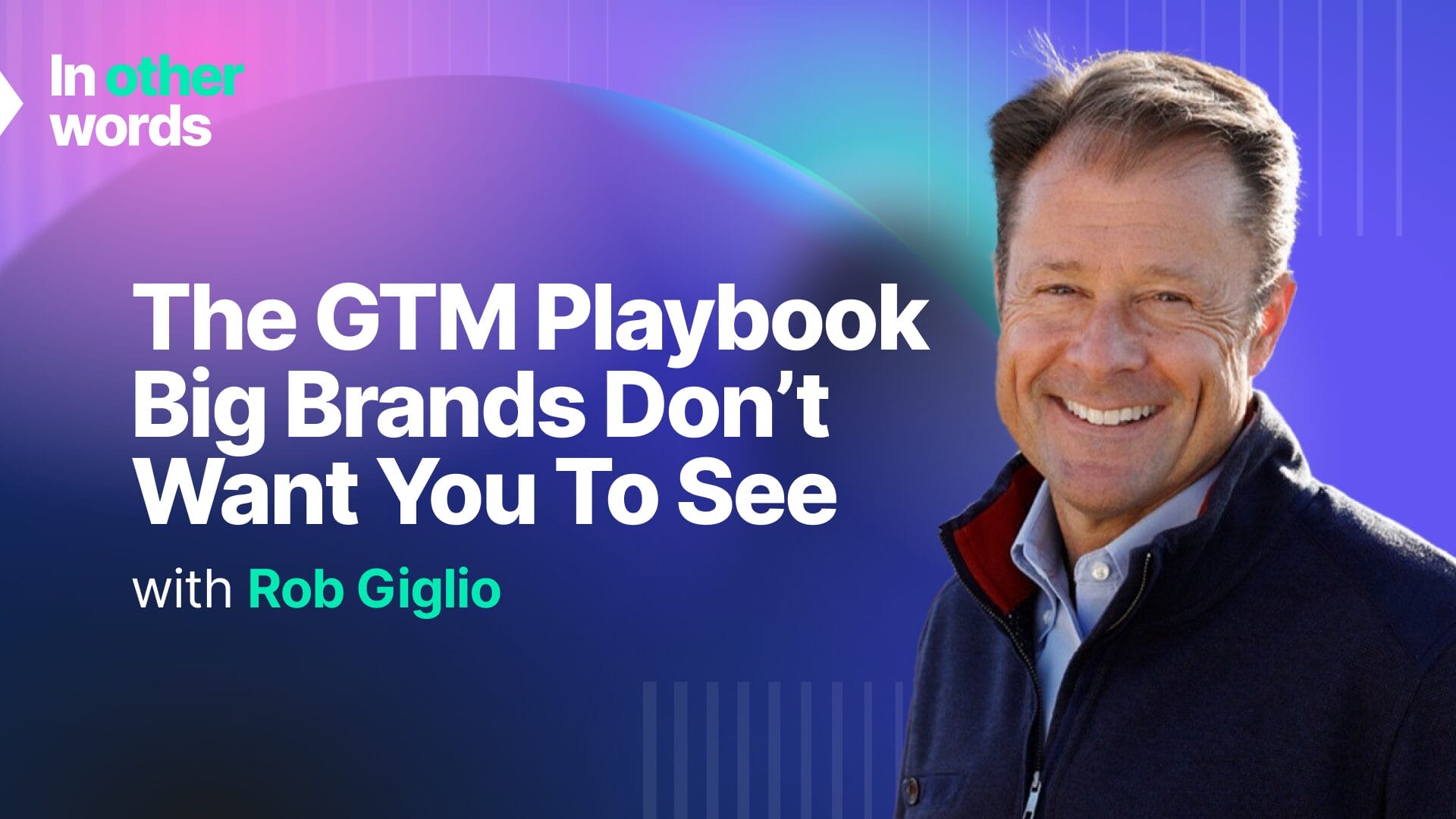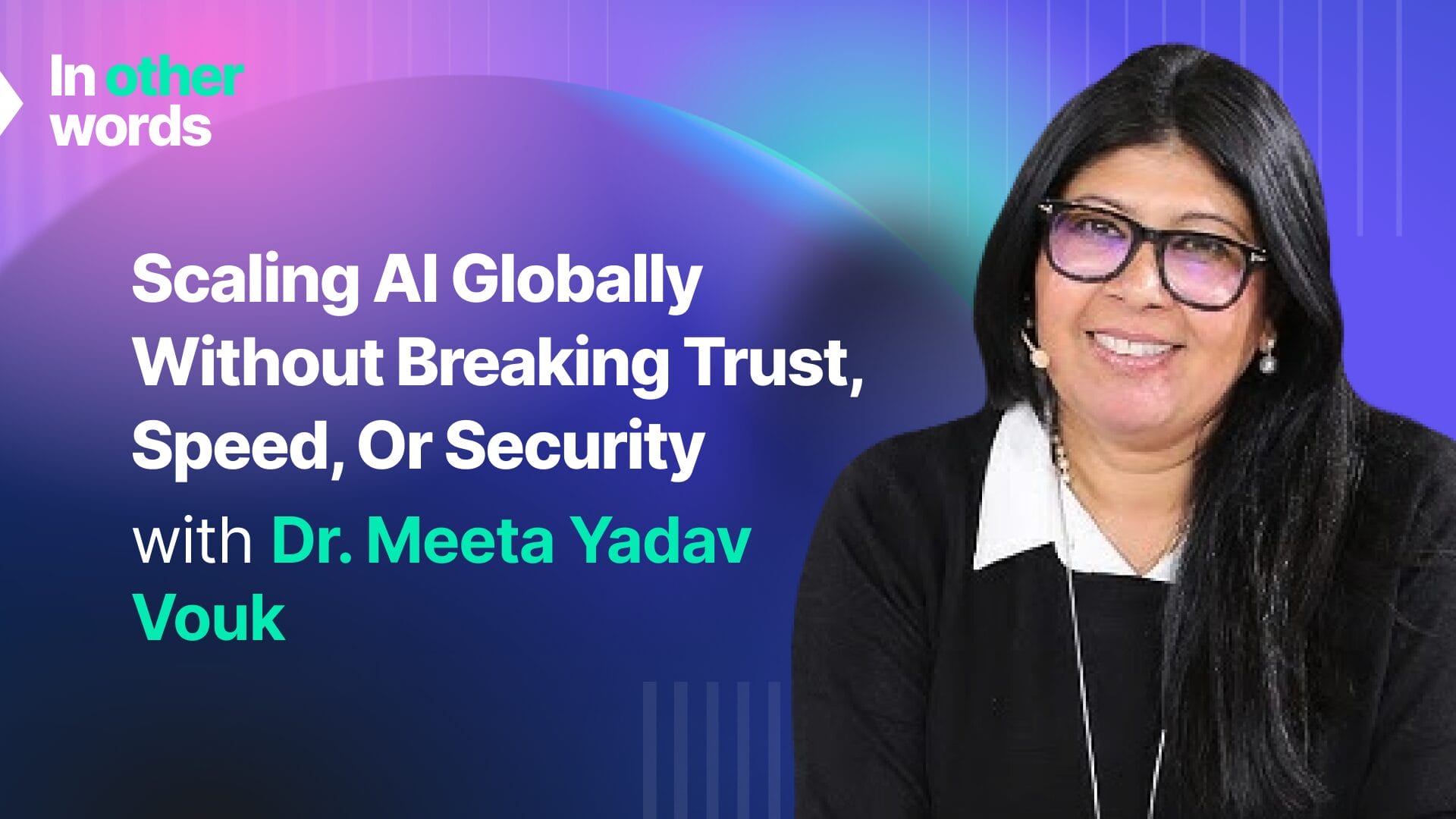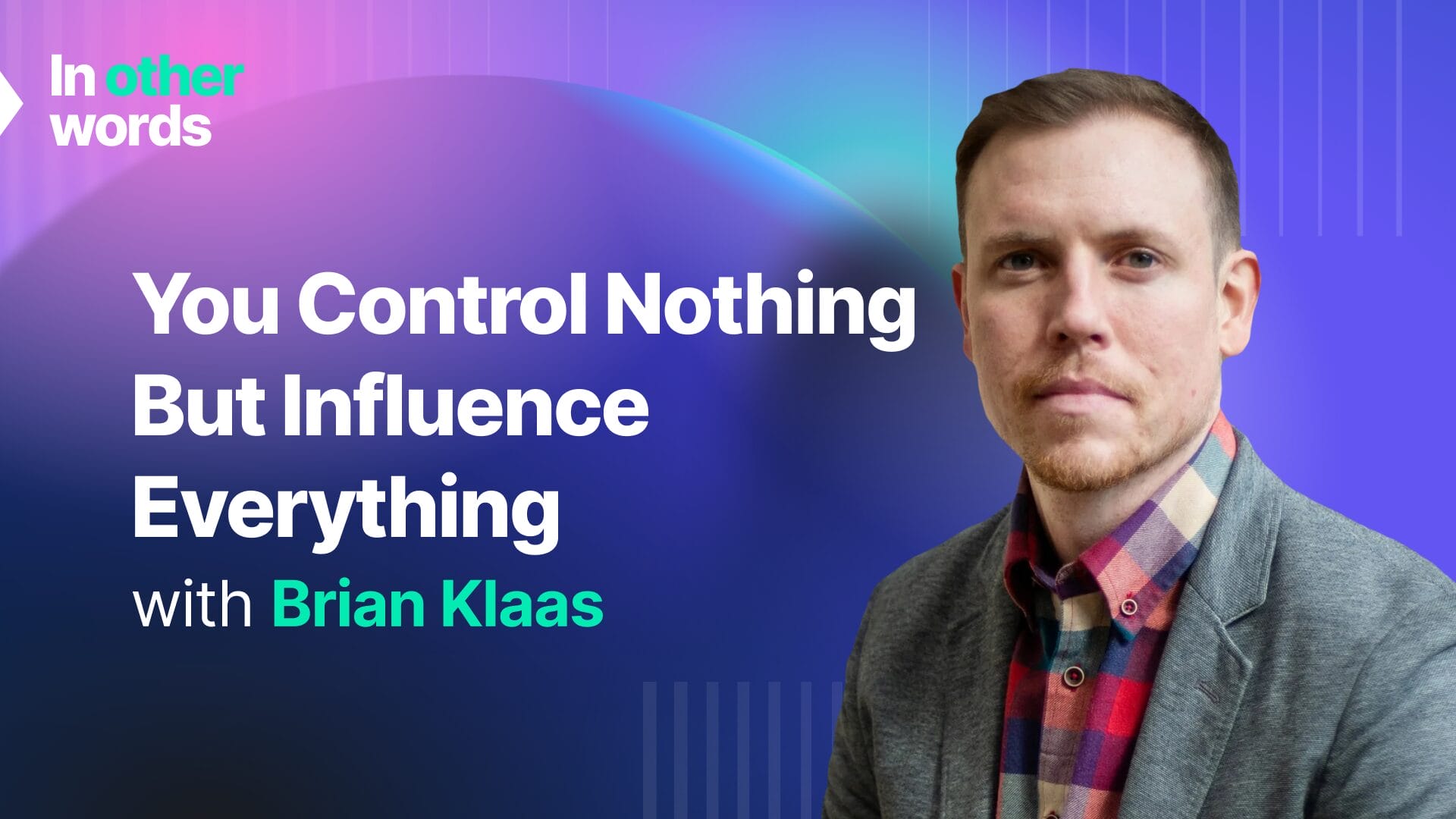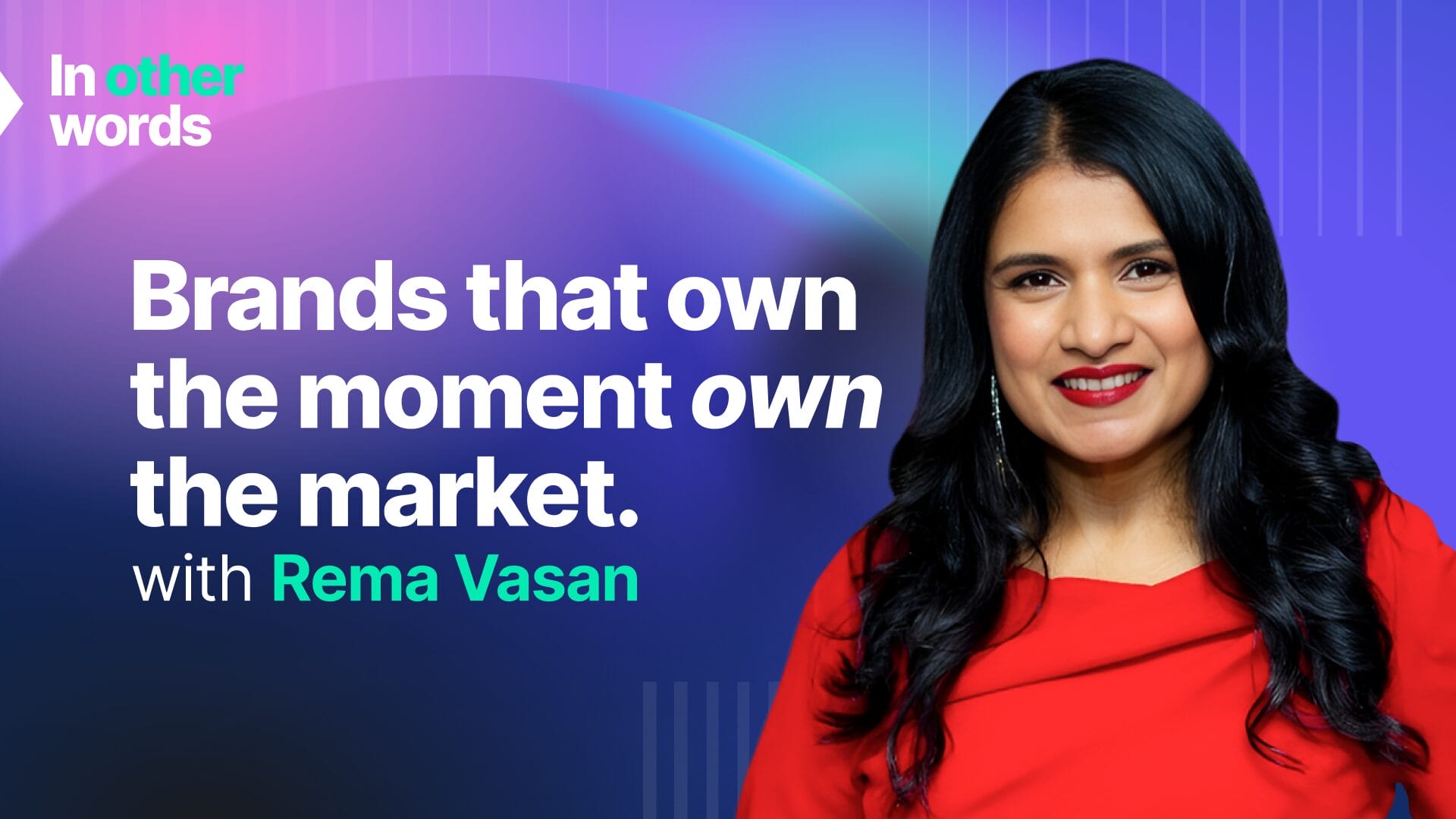Culture isn’t a “nice to have”, it’s your CX growth engine
Host Jason Hemingway is joined by Annette Franz, Customer Experience leader, author and the Founder and CEO of CX Journey Inc., along with Phrase CEO, George Ell. They discuss how strong cultural foundations help organizations stay relevant locally, scale with intent, and deliver lasting business results.



with Annette Franz, Georg Ell, and Jason Hemingway

About our guest
Annette Franz is a globally recognized thought leader, author, and speaker specializing in culture transformation, employee experience (EX), and customer experience (CX). As the Founder and CEO of CX Journey Inc., she partners with organizations to embed value-driven cultures that empower employees and improve customer relationships to drive sustained performance and better business outcomes.
With over 30 years of experience and a reputation as a top EX and CX influencer, Annette has worked across industries, including roles at J.D. Power, Mattel, Fidelity, and Medallia. She’s the author of three widely respected books: “Customer Understanding,” “Employee Understanding,” and “Built to Win.”
Episode transcript
Jason Hemingway: [00:00:00] Welcome to In other words, the podcast from Phrase, where we speak with industry leaders shaping the future of how businesses grow, adapt and connect with global audiences. I’m your host, Jason Hemingway, CMO at Phrase, and our guest today is Annette Franz, founder and CEO of CX Journey, Inc. And Annette’s one of the most respected voices in customer and employee experience transformation.
Also joining us is Georg Ell, CEO of Phrase, and he’ll offer his perspective from the leadership side of scaling culture and experience across multiple regions. I think the episode today will sort of explore the role of evolving customer experience, leadership and employee engagement, and the interplay between employee and customer experiences and how organizations can design cultures that support meaningful global experiences.
So without further ado, Annette, Georg, welcome.
Annette Franz: Thank you. Thank you so much for having us.
Jason Hemingway: That’s an absolute pleasure. So for the first question, what I like to do in these, [00:01:00] and this primarily for you Annette, ’cause I’m sure most of our listeners will probably know Georg by now. You’ve had a long career.
I like to talk about careers and how you got to where you are. It’s quite an interesting thing for people who listen. So you’ve had a long career spanning many organizations and shaping how companies think about customer experience and culture. So, could you just tell us a bit about what first drew you into the space and what’s kept you in it.
Annette Franz: Yes.
Well, it wasn’t my originally intended path, but I started at J.D. Power and Associates back in the early 90s. I had found an ad, the newspaper for a position there, and I was like, ooh, market research, you know, that’s math and writing, right? So the two things that I absolutely love.
So, here we are, but you know, that was 30 some years ago when I was four, and that’s what I tell everybody. I was four.
Yeah, good one.
But, you know, and when I started working at J.D. Power and Associates, so I was working on the customer research side. They’re obviously well known for [00:02:00] their syndicated research, but I was working on the customer research side and I just really loved working with clients to help them improve.
What they were doing so that it improved, you know, things for both employees and customers and ultimately outcomes for the business. And so, over the course of the next 30 some years, I spent a good chunk of time with the major voice of the customer vendors, running their consulting services organizations
and had a couple of stints on the client side as well. And then, you know, back in 2017, I said, you know what, hey, it’s time, it’s time for me to go out on my own and that’s when I started CX Journey, Inc. and haven’t looked back, right? I love having my own business and working on the types of projects and things that I love to do.
So, you know, my main focus is the consulting work that I do, and I still do a lot of that but, you know, speaking, content, thought leadership, those kinds of things are certainly a part of my day-to-day. But I really enjoy working with clients and working with [00:03:00] these companies to help them do better, basically, do better and be better.
Yeah.
Jason Hemingway: And I’m sure over that, you know, lifespan of your career, you’ve seen CX evolve from a kind of functional discipline really as it was, and I should point out some of those VOC companies you’ve worked for, I’ve kind of done some stuff with them as well myself, but we won’t go into that.
You’ve seen it evolve from what was a functional side of things to a much more strategic outcome for businesses and how do you look at that and how do you see the pressures shaping global CX today?
Annette Franz: And you absolutely have to, I think there were so many times early on where voice of the customer and the customer experience were sort of, I don’t know, you know, like this bolt on kind of thing that we do, when ultimately what we do is
about and for customers, you know, without customers we don’t have a business, and so obviously we’re doing it for them. And so, you know, the pressures certainly have [00:04:00] escalated over the years and changed over the years but I think a lot of the things that have really shaped the way that, you know, the global CX leaders and all CX leaders are looking at this.
What was a discipline technically, but really is sort of that DNA that runs through the organization is, you know, it starts with the culture, right? It has to start with the culture. It has to start with, we’ve gotta weave this into our DNA and we’ve gotta get leaders on board and that’s always been a conversation that we’ve had.
Well, hey, is the CEO committed? What’s the board saying? What are the other executives saying? We need to make sure that they don’t just speak, you know, the language of the CFO, but speak the language of the customer and understand why we need to listen to the customer voice and bring that in.
So, you know, it’s culture, it’s the employee experience and what I hope is, becoming a more greater and greater realization that the employee experience drives the customer [00:05:00] experience. It’s the leadership, it’s the customer expectations. If we’re talking about pressures, it’s the customer expectations for where they want this experience to be.
And it’s gotta be seamless, consistent, not just personalized, but hyper-personalized, right? It’s gotta be emotionally intelligent, it’s gotta be convenient, it’s gotta be consistent, it’s gotta be contextually relevant, so, those are some of the things and other things that they’re dealing with are silos.
Silos creating friction and inconsistency. And when we talk about, you know, globally, that just adds a whole other dimension to the silos that exist within organizations. So, those are some of the pressures that I see that the leaders are facing today.
Jason Hemingway: No, and I think it is very interesting and it has evolved, and I think you hit on a real vein there, which is that it’s because customer expectation evolved over time and people expect more from the brands that they work with.
So, Georg, [00:06:00] you are in that leadership position, you are a CEO, you know, you are at the pinnacle of that. So, from your perspective, how far does that resonate with you? You have to keep this balance between, you know, customer culture, achieving business objectives, and also employee kind of culture and
experience.
Georg Ell: I think, as Annette said, these things are all intrinsically linked actually, one thing that really resonated with me, she was talking about the culture and it reminded me, one of our values at Phrase is to have respect for the customer. And when I do new hire onboarding, I do a call every couple of weeks with people that we’re hiring and I talk through our values.
So one of the things I say is that like, and they won’t remember this ’cause they’re younger than I am, but in my early days on the telephone, I remember being told to smile when you’re on the phone, the other side can hear it. And I think the same thing is true about having values of
respecting the customer even when they’re not in the room because if you talk respectfully about them when they’re not in the room, they can sense that in all of your other interactions. And then obviously you have to model that [00:07:00] from the top. I felt a very strong kind of resonance and empathy for what Annette was saying there.
And also the point around personalizing experiences, it’s curious. I remember 12 years ago perhaps, I was on a stage and one of the other speakers talked about this book in CX, I dunno if you know Annette, it’s called The Effortless Experience, and I actually was quite struck by that book at the time, but like so many things, I wonder how it’s aged as a, I’m sorry, Jason.
I know that you’re supposed to be asking the questions, but I’d be curious to get Annette’s view on how that book has aged and perhaps, if you know it, maybe for the listener, give a summary of what the book’s about or, I’d be happy to.
Annette Franz: I think it’s aged well, honestly, and I’ll come back to that in just a second.
But it really is about removing all the friction, removing the friction from the experience, right? This is such an important part of, you know, why do we make customers do more than they really need to do to buy our products, to use our products to interact with, [00:08:00] you know, and to get support and those kinds of things.
And so, people ask me a lot about metrics and when they ask me what are my favorite metrics, customer effort score is one of my favorites, right? I would pick that over NPS any day because I want, it’s truly a customer metric, right? How hard was it for you, how easy was it for you to interact with us?
And if it was hard, then why? And what can we do to, you know, fix that and to remove that friction? So I think that book has aged well and I think that, you know, that metric is that it really important. That metric didn’t come out of the book, but I’m just saying, you know, that metric is really important one for companies to track
’cause that one’s all about the customers, and let me tell you, they do make things difficult.
Jason Hemingway: Yeah. And I think there’s other schools of thought that kind of go into that, you know, the jobs to be done theory work, you know, popularized, I think Clayton Christian sort of work where it’s all about how do you satisfy a customer’s [00:09:00] need in that moment
and the customer’s the only person that can actually say that, whether you’ve satisfied it or not, but you need to sort of understand the customer and let’s go back. Going back to your sort of thinking, Annette, I think you’ve written about the leadership skills you need to embed in order to kind of have that effortless experience or effortless engagement, I think you probably could call it.
What do you believe is the most urgent for companies that are trying to do that across markets and across different cultures? I think we often, when we talk personalization, for example, especially, you know, even in hyper-personalization or whatever it is, we often talk about personalizing in a single framework,
in a language, but when you’ve gotta do that globally, it adds complexity. It’s more difficult. But what sort of things do you think about the leadership skills that you need to do that?
Annette Franz: And that was an important piece because I think there is a lot happening here and, those shifts are really important to consider as we think about how we’re gonna do business going forward.
And, you know, there were things in there, [00:10:00] in that article about, you know, AI and automation and employees and technology and all different kinds of things. But I think, of the shifts that I mentioned, the most important one was culture. You know what, I always say culture is the foundation.
Fix the culture, fix the outcomes. Culture, culture, culture and it really is the operating system of the business, right? So we can’t be successful with AI and automation, we can’t be successful with all these other things that we talk about if we don’t have the right culture set up, a culture that’s data driven,
it’s bringing the customer voice in, it’s X, Y, and Z and we’re always doing things through that lens versus, you know, just saying, hey, we’re gonna.. we haven’t established what our culture is. And then we just start going, hey, we’re gonna do this, or, hey, we’re gonna do that, hey, we’re gonna bring this technology, hey, we’re gonna use this data over here,
and it’s very disjointed and very disconnected. So, you know, culture is the foundation for a reason. Like I [00:11:00] said, it’s the operating system that everything else runs on and if the operating system is broken or outdated or non-existent or not well-defined, you know, things aren’t gonna run as smoothly as we think they’re going to.
Jason Hemingway: And how do you then scale that? So let’s say you’ve got that, you know, leadership team have kind of bought into it, have you got any advice for them to kind of go, okay, if you wanna scale that, your culture, how do you go about it? Where would somebody start?
Annette Franz: And that’s a great question.
Because there are so many, you know, a lot of times we think about, hey, the greatest place to build a culture is if you’re working in a startup and you’re just starting to build it and it’s so easy, right? Much easier. But there are tons of corporations that have been out there for years and years and years, and there are global, there are, you know, multinational corporations.
So I think the first thing that we have to have in place is this culture plan, right? Because that then becomes the framework for how we’re gonna operate across borders, across [00:12:00] business units, across borders, across whatever, right? And so that’s gonna be a really important piece.
And then you have to build, I think too many times when we think about this question and we think about culture, we think about this global culture, but the culture has to be, it has to be localized because things that make sense here in the U.S don’t make sense in the UK or, in Germany or in Australia or wherever.
They don’t make sense, right? And some of that gets lost in translation, you know, we build the culture here in it, literally, you know, and so, I think that’s important. The other part that’s important is governance. I talk a lot about governance, which is about oversight and execution and it has two
parts to it as well. It’s the structure, the committees and the other part of it is the operating system. The committees, especially the culture committee, the culture ambassadors are really gonna be important to not only, you know, if you’re just a U.S or [00:13:00] one country organization, but a multinational, you’re gonna need those ambassadors to be the ones who spread the good word and live the culture as it localized for your, you know, for your location kind of thing.
And I think another important part of it too is that it has to be operationalized, right? Culture is core values plus behaviors. Those core values have to be operationalized. It’s how we hire, fire, promote, review, performance reviews. It’s how we lead, it’s how we make decisions, it’s how we make, define and design policies and processes and all of those things, right?
So it’s how we reward, we reward and recognize based on, so everything has to be done through the lens of those core values. And again, that has to be localized, right? But still there’s that consistency because we know what the values are and we know what be behaviors are acceptable and unacceptable.
And then I think the last thing, there’s probably more, but in my mind, is really to measure what matters, right? Get feedback and data about how things are going in terms of the [00:14:00] culture, the workplace. Is there misalignment here, or is everybody on board? Are people living the culture or are they not?
So I think that’s a really, really important part of that.
Jason Hemingway: I think that’s interesting. We’ll come back to measurement in a minute and maybe Georg, you’ve got some ideas on that because, you know, businesses you’ve worked in may have some mechanisms to measure that. So I’m going open it out a bit to you, Georg.
You’ve worked, I mean, number one, you’ve worked in some massively global, you know, businesses. Number two, you know, you’ve got, at Phrase, we’ve got a customer base of people that are doing this kind of stuff all the time, you know, multilingual, lots of different cultures, lots of, embodies exactly what happens.
So what’s your kind of perspective on how people approach this? Have you got any things that you’ve seen that work or, what have people underestimated?
Georg Ell: Definitely. I think, I had a few thoughts as Annette was talking, one of them.. perhaps I know the example well because I worked there but Microsoft, a very, very large company and a very different place under Steve Ballmer versus Satya Nadella,
very different place and it’s [00:15:00] amazing how in an organization with, is it two, is it 300,000 employees? I don’t even know, like many, many employees, how actually the leadership really makes a difference. And I think that’s a saluatory lesson for leaders of companies of all sizes because actually those leaders do make a difference.
And so they have to live it, they have to walk the walk, so to speak, as one person I’ve worked with says, live it, don’t laminate it, you know, it’s not something you laminate and put up on the wall, but you actually have to live it. And there’s signaling, I think signaling is actually very important.
So one at Microsoft was that up to Satya, there was very high conviction, shall we say, that you should only use, you know, Microsoft devices in the Microsoft workplace and now if you go to a Microsoft office, people are carrying iPhones and Android phones and you know, that was acceptable long before they got rid of the Windows phone.
And the point was to embrace the diversity and it was a very physical manifestation of that. And, so I think signaling really matters. I think that there are other practical things that one can do, like all hands meetings, [00:16:00] we choose to do them weekly at Phrase. I think that that gives us a certain cadence of like pace, as well as an opportunity for lots of voices to be heard around the business.
International voices, different genders, different levels of seniority, different levels of experience, I think that adds a lot to culture but you can do those things monthly. But I actually think if you do the all hands too infrequently, they become, like a broadcast announcements, which you know, is still sort of interesting, but they’re much less valuable from a culture perspective.
I think when things that don’t work are when people see obvious disconnects between what leadership say and what leadership do, and particularly if leadership is seen to delegate culture, you know, if it’s, oh, you know, the HR team, the people team, they do culture, and I just don’t think, that’s not what culture is.
The last thing perhaps, just to be, I think sometimes as a leader, you also have to choose what you stand for or not, right? Culture isn’t pleasing everybody. Culture is sometimes taking a stand [00:17:00] on an issue and saying, you know, this is our view and you know, people then need to sort of take a decision about whether or not they agree with that view.
And, you know, I’ve had to do that a couple of times and it’s given me great satisfaction, but it hasn’t, I’m sure pleased everybody. Yeah, that’s interesting. And I think,
Jason Hemingway: you know, Annette, you’ve got some, you know, worked with some big organizations no doubt on, you know, balancing
that authenticity with, kind of, the desire to grow speed and scale, you know, larger organizations, I guess that gets harder. So, how do you do that? How do you balance that kind of? Because in a smaller business, you can drive that culture. We said that at the beginning and drive that culture a lot more easily.
I wouldn’t say it’s easy, but you can develop systems that are easy to implement and can get everybody going but how do you do that in big, large organizations that might be, you know, distributed across the globe? It’s tricky.
Annette Franz: Absolutely. And I might sound repetitive [00:18:00] here, but it really is, and you made a great point about the leadership, right?
There has to be commitment and alignment from the leadership across the organization, right? It’s gotta be, it has to be global, otherwise, it’s gonna break down, it’s going to be inconsistent and yes, culture, you know, and that work all starts at the top but eventually there’s that
grassroots groundswell that, that I always call it with, you know, these culture champions or culture ambassadors that I talked about a little bit ago and how they then go out into their departments and their business units and their locations and everything and, you know, live the culture and show their coworkers how we’re gonna live the culture
right. But I think there’s a couple of things that we also need to think about if we really wanna think about, you know, preserving that authenticity and whatnot is, we have to codify the non-negotiables and [00:19:00] what are those non-negotiables? Those are, again, going back to the definition of culture, core values and behaviors, right?
What do the core values mean and what behaviors are acceptable and unacceptable? I think that’s a big part of that, and it’s a big part of when we get that grassroots groundswell, what those culture ambassadors and those culture champions have to live and go out and advocate for, and show, this is what we do.
Right? I think that when we use technology, and this is a hot topic now especially with AI, but I think when we use technology, we have to use it to automate sort of the transactional and the things that are, you know, going back to friction and frictionless and effort, like, automating those things, but making sure that the relationship piece of both how employees interact and work together and [00:20:00] leaders interact with employees, but also how employees interact with customers and whatnot.
So keeping that relationship part of the business very much human, right? Yes. I think… There’s a human,
Jason Hemingway: there’s a human angle, isn’t there to it.
Annette Franz: Absolutely.
Jason Hemingway: Yeah.
Annette Franz: Absolutely. Right.
Georg Ell: Yeah. Go ahead. I was at a conference last week and, there was a speaker who made a wonderful point. He said, “we all need to use AI to enhance our humanity, not to deprecate it.”
So there’s a line of reasoning now I see in some podcasts that, you know, all managers are superfluous ’cause the AI can assess everyone’s performance and capability, and so, and actually, if we’re aiming to use AI for that, then that’s an incredibly sad future, whereas if we’re leveraging AI to enhance our humanity, and to therefore be able to
choose those core values and behaviors and then articulate them in a way that resonates locally. I think that’s incredibly important, ’cause it, you know, you can’t just say the word, you gotta land the meaning.
Jason Hemingway: Yeah, that’s absolutely true, land the meaning. Now, well, that’s a good segue actually to our middle of the show [00:21:00] section, which is all about an inbox confession.
I’m gonna ask you, Annette. Georg, I’ll give you a pass ’cause, you know, you’ll be guesting in the future and we’ll get to it, but, so talking of automation, what’s the one thing you wish you could automate in your workday? And I’ll tell you how original you are at the end. Lots of people say the same answer, but I’ll tell you at the end.
Annette Franz: Okay. Okay. And as I’m thinking about this, I’m like, okay, I’m suddenly probably gonna, you know, be spammed by every accounting and payroll firm out there, but accounting and payroll, if I can automate that, I will happily take that off my plate any day.
Jason Hemingway: You literally have just opened the door to all of those emails.
I know, right? So the next one you might say, I’d like to automate a spam filter, is probably what you’re gonna say next time we talk to you but anyway… no, it’s good. Great. Okay, so now, there’s
Annette Franz: what everybody else said.
Jason Hemingway: Well, the most popular answer usually is calendar, because people feel that, they’ve got so many meetings, they love to automate accepting, rejecting calendars.
Ah, ah, [00:22:00] okay.. But anyway, yeah, yeah. There you go. I’ll give you that one. I
Annette Franz: don’t mind that so much. I would take accounting and payroll any day. Yeah. Yeah.
Jason Hemingway: Definitely not my area of expertise, but anyway. Okay. We’re going to sort of move a little bit into sort of once you’re implementing this kind of change, and I just wondered whether the, you know, are there pockets that you might find of resistance?
You know, we talk a little about change wheels and things like that, and there’s all those kind of models you can use, but I guess, what are the tough parts you encounter at resistance? What are the tough moments and how do you manage through those as a leader or somebody in a team?
Annette Franz: Yeah. And there are tough parts. Absolutely. There’s always resistance to this change. And so I’ll take a two-pronged approach here. So the one is probably the less, most people will think this is the less desirable approach, but, it’s also very effective because there are just some people [00:23:00] whose minds you can’t change, some people who will just be toxic because of their constant resistance, their constant pushback, their constant, we’ve always done it this way, blah, blah, blah.
So, this side says some people just have to go. If they’re not gonna get on the bus, they just have to go. The other side of it is, for those people who are, you know, they’re resistant, but they’re open to listening and stuff. The other side of it is the education and the communication, right?
A lot of the common questions are around what’s in it for me? Why do we have to change? What happens if we don’t change? We’ve always done it this way, so why do we, why is this, you know, blah, blah, blah, those kinds of questions. So to manage that, you really do have to address them and don’t underestimate the importance of answering those questions and answering them on a regular basis
right? Educating, having open and honest communication, having, again, regular [00:24:00] communication. It’s, you know, monthly updates, it’s showing progress, it’s showing what’s in it for you and showing what your new role is gonna be or how it’s gonna change the company or what’s, you know, the,
this is for the betterment of X, Y, and Z, whatever we’re doing, right? So, they really need to know the why and the how and the when, and just constantly being educated and updated. And communication is certainly not overrated and this, right, and then acknowledge it. it’s really important too.
Acknowledge it. Acknowledge it for what it is. We know it’s hard, but we have to do it, and here’s why. So again, it’s all in the communication. It’s all in that package of you’re gonna do it.
Jason Hemingway: And then you obviously talk about the champions that you can, help you take it out, but are there, you know, I was thinking about this, you know, employee experience and customer experience.
You know, your main thrust is that those two things are intrinsically linked, but who are the kind of bridge people at the senior level? I know [00:25:00] obviously CEO Georg’s gotta drive the agenda, but who else in that function, is it all the exec or would you say, you know, Chief Customer Officer, CX leaders, the people team, who has to really, really get it,
right?
Annette Franz: I have been in multiple leadership team meetings where there’s people sitting next to me or there’s leaders who come up to me afterwards and go, oh my gosh, I never even thought about that. That employee experience drives customer experience and lo and behold, that’s why, you know, everything is the way that it is.
And so it is, it really is everybody and I really do focus on getting leadership commitment and alignment early on in the work that we do, because everybody’s gotta be on board. It can’t be inconsistent from one department to the next, or one country to the next, or one business unit to the next,
right, it has to be consistent. So yes, it does have to, like, it rests on the executive team but just like with, you know, with the customer experience, we’ve got this chief customer officer over on the employee side, we have or should [00:26:00] have, you know, chief people officer, people, and, you know, talent and culture or whatever it is, that person needs to also be the champion for the employees and be the driver to make sure that nobody falls off the bus.
Jason Hemingway: And you’re absolutely right. And yes, I wasn’t singling teams out to be the people to lead it, it has to take, you know, the entire executive team has to believe in it and then it has to permeate down to the senior leaders within businesses, distributed across regions. I’m sure. So, just moving to you, Georg, have you seen any pivotal moments where that’s shifted, you know, you’ve shifted your leadership approach in scaling culture?
Have you gone from, you know, one angle to another? How do you keep it agile? How do you stay fresh with
Georg Ell: it all? Yes, definitely. I think there’ve been three or four pivotal moments for me in my own journey. One early on was when I was at Yammer. So Yammer, for those who don’t know it or remember, it was a venture capital backed startup
that made it through series A, B, C, D, and was then acquired by Microsoft and [00:27:00] became part of Office 365 and so on. So we were a company that was building a product around enterprise social networks. So imagine Slack but in 2010, ’11, ’12, when Slack was only founded in, I believe, 2013 or 2014, so we were Slack before Slack and
this was quite revolutionary at the time because the absolutely dominant form of business communication was email. So if you imagine life without Slack or Teams, you know, and those products, everyone was just emailing each other. It’s like thousands of emails a day that you’re receiving and I can pretty much guarantee that any one of our guests would’ve asked for an automation to that if we’d been doing this, you know, 10, 12 years ago.
And then it was also this time where products like Yammer then were quite revolutionary because they flattened the organization because it moved communications from inboxes, which were inherently kind of this dark matter of the organization, like really hidden, siloed, content and communication into working in the open and teams and products working there.
I remember hiring this [00:28:00] salesperson and he joined us. And a week in, I sat down with him on the Friday, he started on Monday and on Friday I sat down with him, how’s it going? And he was on the edge of his seat. His job was to sell Yammer but he said, this is unbelievable. I’ve joined an organization where suddenly I can get context for everything.
I can go back and look at the history, and I can see who’s who and what we’ve done and so that word ‘context’, that word context is the biggest sort of single leadership change for me, and I’ve had some others along the way, but leadership via context. There was actually a chap called Mike Grafham who worked with me at the time, and he really educated me on this too, because you see Microsoft, when I left Microsoft to go and work at Yammer was still quite commanding control and very email oriented.
And suddenly this idea of like leadership via context sharing, getting lots of debate going, and then of course at some point you have to bring the debate to a conclusion, set a decision and go forwards, and perhaps there’s another round of debate. And so there has to be some elapsed time between debate one and debate two.
Otherwise you’re just continually debating and no action. But that kind of concept of leadership via [00:29:00] context has really shaped my leadership since 2012 when I was there.
Jason Hemingway: That’s interesting. And so, just moving slightly along to, okay, we’re implementing it, we’ve got the right people talking, we’ve got champions,
and you’ve got a distributed, let’s say, a massive business with lots of different people in lots of different countries and regions, all different languages. What do you have to think about in terms of feedback loops and the metrics? You alluded to it when we first started the pod just earlier, but let’s talk a bit more about how do you build that in?
What are the feedback loops? How do you measure and keep that going and know you’re doing well? Or badly.
Annette Franz: You know, it’s so funny because the work that we do for listening to employees is very similar to the work that we do when we listen to customers. So it’s definitely got to be part of the culture that you build is this feedback culture, right?
And it’s simple, [00:30:00] really. Right? We need to ask our employees, and it’s however we do that and it can’t be massive surveys. Back in the day, we used to think, oh, they’re employees, we can ask them 120 questions in these surveys and they won’t care and they can do it. They’ve got the time, they work for us, you know, kind of thing.
But no, there’s a lot of other ways that we can get feedback from employees and whether it’s, you know, just sort of pulse surveys or it’s your one-on-one meetings, or it’s stay interviews, or it’s employee round tables, or employee listening tours. I’ve worked with several executives over the years to set up these listening tours where they go from location to location to location, just, you know, sit and it’s
listening, so it’s not just, you know, the executive sitting there for an hour and spewing information. It’s, you know, maybe 20% of the executive giving updates and the other 80% of the time, we’re getting feedback from employees. What’s going well? What’s not? You know, those kinds of things.
So that’s a really [00:31:00] important part of that, and finding ways and employee advisory boards. There’s another, I mean, there’s a lot of different ways that we can get feedback from employees about what’s going on but the important thing is that afterwards, we acknowledge we heard you, right? And then we act, we do something about what we heard, and we close the loop and we tell them what we did
and then it’s this continuous loop again. Right? Lather, rinse, repeat. We wanna continue to find out if, just like we talked about customers, expectations change for employees too, the jobs that they wanna do, all of that changes, you know, as time goes on especially as we start, you know, bringing in new technology and automation and this and that, right?
We wanna be, we wanna have, you know, our thumb on the pulse of what’s happening with our employees and what their needs are and their expectations, those kinds of things. So, I think that’s a really important part of that and, you know, I go back to some of these, you know, you were talking about the
[00:32:00] two-way, and the feedback loops and those kinds of things. It is important for both employees to get feedback from the leaders, but leaders to get feedback from employees and again, and do something with it, you know, going forward. I think that’s the most important piece.
Jason Hemingway: Yeah. And I think, Georg, what’s kind of helped you in your career get that two-way feedback, is there kind of practical examples for people to
Georg Ell: sort of, what have you seen?
I’ll tell you what we do. So we do a weekly all hands with anonymous Q & A and we don’t moderate it and I have sometimes been told by other CEOs that that’s a little crazy, but I find that the trust that you get by answering all the questions in an unfiltered way, so you do get the sublime and the ridiculous in terms of questions, but I think then,
how you respond to those gives you an opportunity to demonstrate your core values and ultimately also builds a certain trust and even I think empathy with the audience. If they see you put on the [00:33:00] spot by awkward or difficult or unreasonable questions, then you know there’s a certain empathy they have for that as well.
We also do quarterly, I’d love to get your feedback on this, Annette, we do quarterly engagement surveys here. They have about 50 questions. It’s with a particular tool that then allows, you know, standard set of questions so we can benchmark that against their history and so, sometimes, we have pretty good participation rates, sort of, 86% – 90%
but it’s not without a certain amount of effort to get that level of participation. And there are definitely some folks who think we should do it less often or have fewer questions. I’d love to get your feedback on that particularly versus say an alternative and maybe, it’s not a versus, maybe it’s a both and, but the kind of pulse survey, the weekly kind of concept, which I’ve never really experimented with, but I’ve, I will just say,
I’m open to feedback from my team to do it less often, but I really value their feedback. I read it all. We get 800 [00:34:00] comments, I read it all, I respond anonymously, I respond to 1 or 200 every time, like I’m one of those CEOs that genuinely buys into this and it’s, sometimes, I wonder why people who ask for leaders to take feedback seriously, get one and then say, you’re asking me too often, which is really curious, that tension.
Maybe you could just explore that for us. Give us some best practices.
Annette Franz: So a couple things, at the end of employee surveys, I add a question that says, do you believe that your leadership team will do something constructive with your feedback? That’s in there. Yeah. And you’ll be not surprised by the answers to that question. I’m sure.
I actually had a client when I first started working with them, they said that they did this survey quarterly, and they had been doing it that way for two or three years. Well, the employees told me that they would just save their comments and the next quarter, they would get the survey and they would just copy and paste, copy and paste, copy and paste, copy and paste
because you know what? Here’s the best practice. If you’re gonna survey that often, you better [00:35:00] be able to make changes that quickly and report back to your employees that you made those changes that quickly. And most companies can’t do that. Most companies can’t within 90 days, read, analyze, you know, get the plans out there to make the changes.
Make the changes, close the loop with employees and let them know, and then serve that them again in another span of 90 days, that usually doesn’t happen. And so I think that’s the important part when you think about the timing of a survey is, how quickly can you make those changes so that employees don’t do what this particular client’s employees did.
We were just, they just didn’t do anything with it, period. But if you can make those changes in within six months, then I would shift the timing to be, you know, six months because then you can get a read on, okay, the changes have been implemented, they’re feeling the changes, and they either suck or they’re like doing what we hope they would do, which is to improve the experience.
Right? So those are some things to think about there.
Georg Ell: That’s a good point. I think, I mean, I feel like because we’re 300 people, so you know, [00:36:00] we do the survey. In 48 hours, I’ve read everything and at the next All Hands, which happens every week, we present the results incredibly transparently. So I think we are at that kind of high pace change.
And everyone has access to the results in the platform too, don’t they? So it’s different, I think for a larger company.
Jason Hemingway: I think, yeah, it would be harder to scale that to huge organizations. Okay. Well look, we’re getting towards the end and I think, Annette, I’ve just got a few more questions and we’ll have a tiny quick fire around at the very end, but I think, you know,
one of the things that I think people struggle with, or question sometimes, okay, right, we’re gonna get the employee experience, right? We’re gonna get the customer experience right? What are the outcomes that people should expect from this, you know, business outcomes, what could you expect as a business if you get this sort of stuff right?
Annette Franz: Yeah, I have this great graphic that I created a couple of years ago, which, you know, shows sort of the link between building that people-centric, that customer-centric, [00:37:00] that employee-centric culture as the foundation, and then what the outcomes are as a result of doing that. So it starts with the first, you know, the first column is the foundation.
So we get the culture right, we have leaders who care and they’re committed and they’re aligned and, you know, the things we talked about. The culture, I always say is the precursor for the employee experience. So if that sets up the employee experience to be good, then we’ve got employees who are happy, engaged, satisfied, they’re productive, they’re more creative, they’re more innovative, all those things.
And then, and they feel valued, and they feel supported, which is really important. All of those things translate to, oh wow, look, we’re doing great things for our customers because we’re doing great things for our employees. So then we’ve got the next, you know, couple of boxes, our customer outcomes, because we’re solving problems for customers because we are more creative, more innovative.
So we’re solving problems for customers, they’re happy, they’re feeling heard and valued, [00:38:00] they’re loyal. We go, you know, satisfied all the things and as a result of that, business outcomes, right? You have this great competitive advantage because your competitors aren’t, but you’ve got, from an employee perspective, you know, your talent, your employer brand is strong.
Your talent and your recruiting is much shorter. That cycle’s shorter because people wanna work for you. Customers are, you know, customer lifetime value, we’ve got growth, profitability, blah, blah, blah, all those kinds of things. So those are the outcomes for the business. Right? So I think, I don’t think people think about it that way, but if you think about that linkage and that progression and how it all works together, it really does.
I mean, to me, I’ve seen it happen and it totally makes sense.
Jason Hemingway: Yeah. It’s a good framework.
Annette Franz: It is and I didn’t borrow it from here, but a little while later, I started reading some of the stuff that I had written a while ago and I pulled out the service profit chain and if you know the service profit chain, you know, that was
[00:39:00] basically what they talked about too. They had it written up a little bit differently, but basically they said, you know, if you have a great workplace design, your employees are gonna be happy, they’re gonna treat your customers well and the business is gonna, you know, grow and profit as a result of that.
So…
Jason Hemingway: Well, let’s kind of draw it to a close there. I think we’ve got a quick fire round, and then we’ll just do a little sum up, Georg tell us your thoughts from today, but, okay. Three questions really quick. If you had to launch a new CX initiative tomorrow, where would you start?
Annette Franz: Not a surprise. The culture. That’s where I would start.
Jason Hemingway: Knew that a bit. Describe global growth in one word.
Annette Franz: I actually have two words, but I’ll go with exciting. The other word is scary.
Jason Hemingway: I’ll take exciting. We don’t want scary, but yeah. And then, who do you think, you know, in our pod, we should speak to next?
Annette Franz: It depends on what the topic is. I could certainly recommend a few folks to you. One person who’s top of mind would be [00:40:00] Jeannie Walters. She is an amazing customer experience consultant and, yeah, I could give you a whole host of folks, but she’s the one that almost top of mind for me ’cause…
Jason Hemingway: Okay.
Well, Jeannie should expect our call at some point soon. And then just to wrap up, Georg, before I get to sort of close it out, has anything stood out to you from today’s conversation with Annette?
What’s your sort of thinking?
Georg Ell: I think how holistic it is. I think a lot of people still think about employee experience as distinct from other strategic initiatives.
And actually, what we’ve just talked about is how completely connected employee experience and customer experience, and business outcomes are. You can’t disentangle this, so you have to think about it at the most senior level, and you have to demonstrate through behaviors, through signals that you’re committed to it, and then have that trickle down and it can work in even the biggest organizations.
Jason Hemingway: Brilliant. Well, Annette, Georg, thanks to you both. It’s been what I can only describe as a masterclass in CX and employee [00:41:00] experience and, yeah, enjoyed the conversation. Hope to see you again, Annette and Georg, we’ll catch up soon.
Annette Franz: Likewise.
Georg Ell: Thank you, Annette.
Jason Hemingway: Thank you. Well, that’s it for another episode of In other words, a podcast from Phrase.
I’ve been your host, Jason Hemingway, and I was joined by Georg Ell, our CEO. A big thank you to Annette Franz for sharing her wisdom on how culture, employee experience, and leadership come together to shape meaningful global experiences. If you enjoyed today’s episode, be sure to follow, In other words on Spotify, Apple Podcast, Google Podcasts, or other podcast platforms of your choice or even visit phrase.com.
Stay tuned for more frank and pragmatic conversations on leadership, customer experience, and AI, and what it really takes to scale globally. I’ll see you soon.



